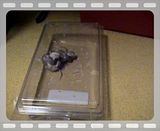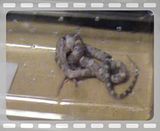Well, you cracked the nutshell with this post. The most common arguments presented for feeding live prey are that "feeding live is more natural for the animal - after all, no one kills their food in the wild" and "I like to give my animal a chance to hunt and kill because it really likes it."
The fact, however, is that captivity is not a natural state. Our reptiles and amphibians are not spending their days searching for food, hiding from predators, searching out favored microhabitats while avoiding aggressive members of their own species, hiding, vulnerable to predation and attack, during their shed periods. Instead they are housed (or should be!) in a comfy enclosure with all of their habitat needs met. If we wanted our animals to enjoy a natural state, we would never have acquired them.
As for needing the "thrill of the kill," that is anthropomorphism at its worst. What our reptiles and amphibians need is a large enough environment outfitted properly to give it enough mental and physical stimulation. For reptiles who are handleable, handling and that opportunity to be out of their enclosure provides the exercise and stimulation that they need, not chasing a rat or mouse around a small rectangular box.
Feeding killed is also safer for the reptile or amphibian. An animal who is not hungry will not eat. It will ignore whatever is going on around it. A prey animal left alone in a tank with a predator, however, is not so relaxed about the whole thing. Mice and chicks are usually terrified, spending their time cowering in a corner or trying to find a place to hide. Rats, however, come from bolder, and hungrier, stock. If left alone long enough with a disinterested predator, they will begin to eat whatever is around: your snake or lizard. Crickets and mealworms are similarly fearless and hungry. Rats have eaten their way into snakes, devouring the skin and flesh off their backs, exposing long stretches of backbone, even quite literally eviscerating them. Even crickets and mealworms will gnaw away at the skin and seek moisture from the eyes of healthy herps when left unattended in an enclosure without proper food and moisture for them. One of the most tragic things a vet or experienced herper sees is an otherwise healthy reptile or amphibian that has to be put down or is already dead from such prey feeding practices.
Live prey may also fight back during a feeding session causing severe injuries. Claws and teeth can bite through the mouth area, puncture eyes, cut through tongue sheaths, and puncture or slice through a coil of the predator's body.
There are those who will argue that it does not happen in the wild. There are also those who will argue that it does happen in the wild and that, being a natural occurrence, should not be avoided in captivity. It does happen in the wild. We don't see much evidence of it as the injured or crippled predator manages to hide away before dying or is itself preyed upon by another predator before dying or is scavenged after dying. I responded to a call where I found a wild gopher snake whose jaw had been fractured and half its tongue bitten off by prey who had successfully fought off a feeding attempt, its grossly swollen and bloodied tongue sheath dangling from the broken, crooked jaw.
Whether it happens or not, however, is immaterial. We are responsible for the health and well-being of our animals in captivity.
That means keeping them properly housed, heated, humidified and fed. And that means keeping them safe from avoidable harm. 


